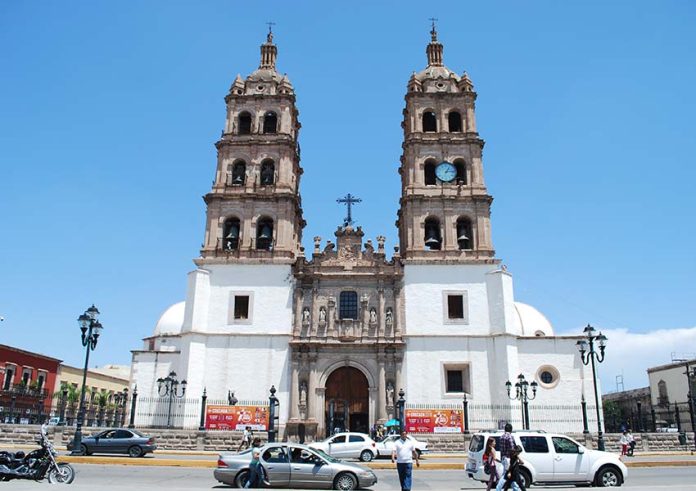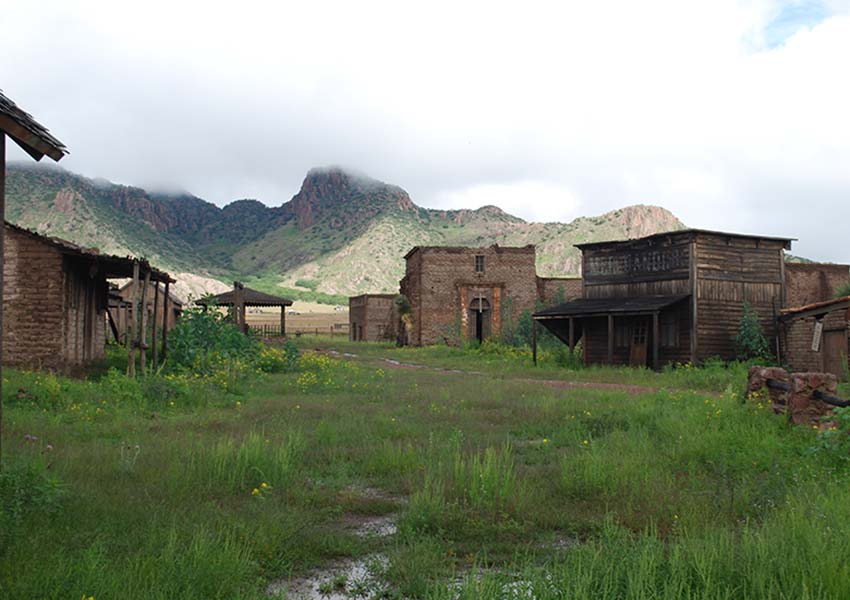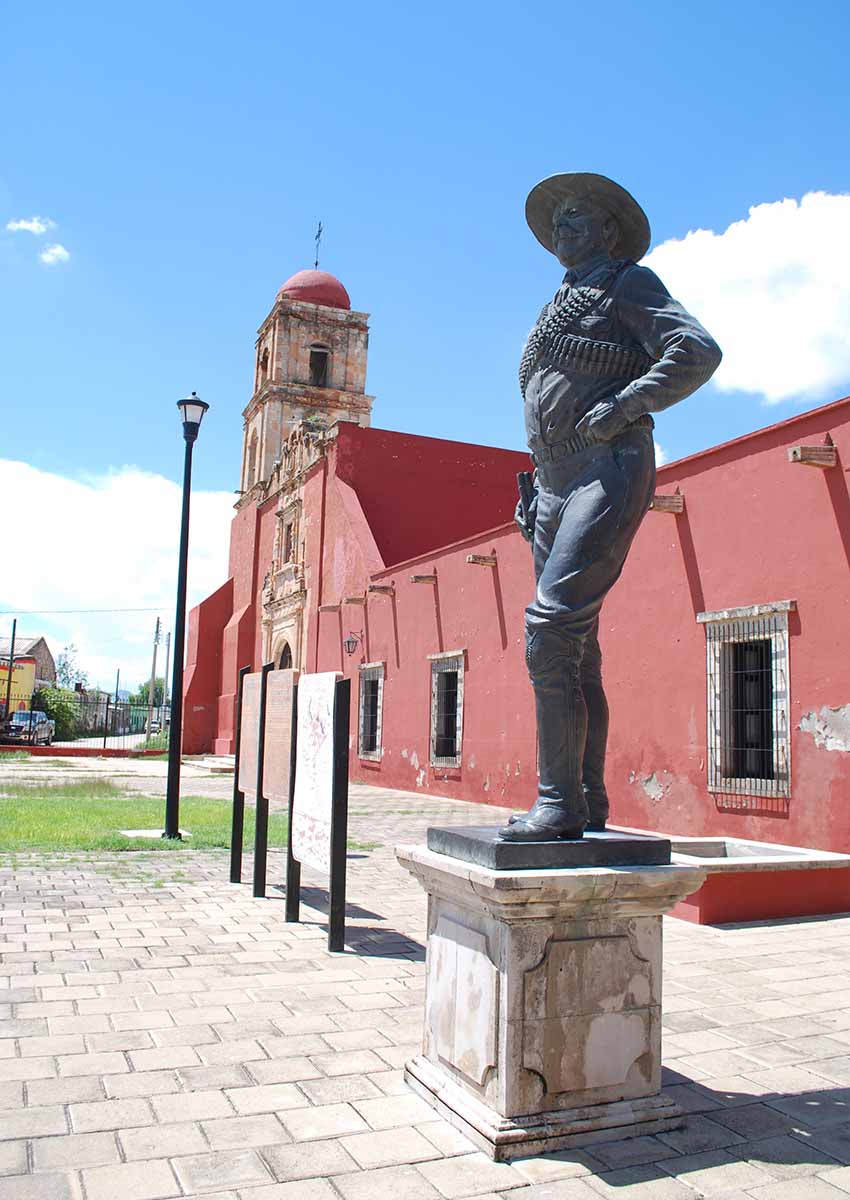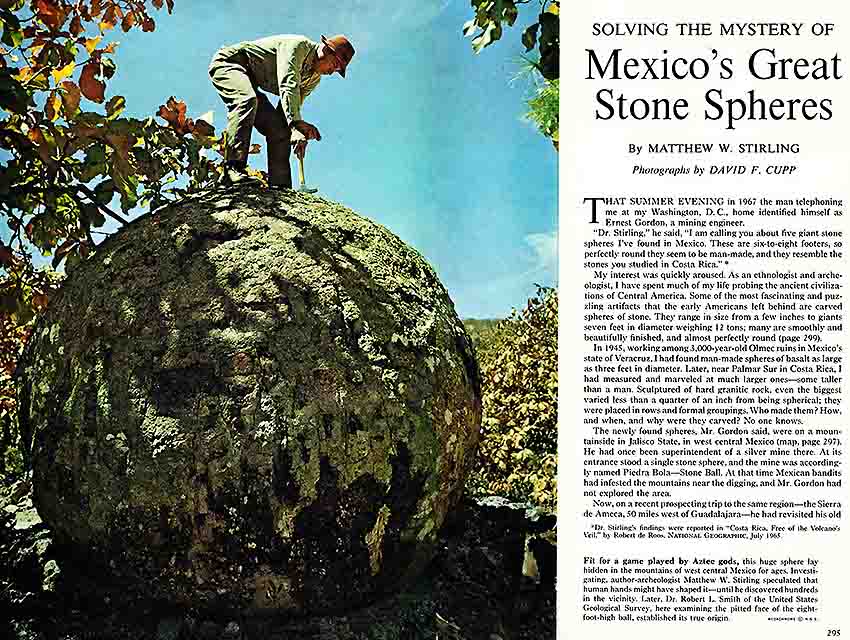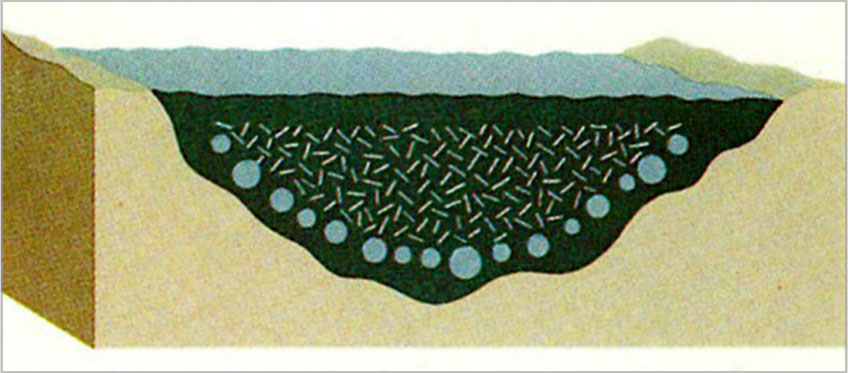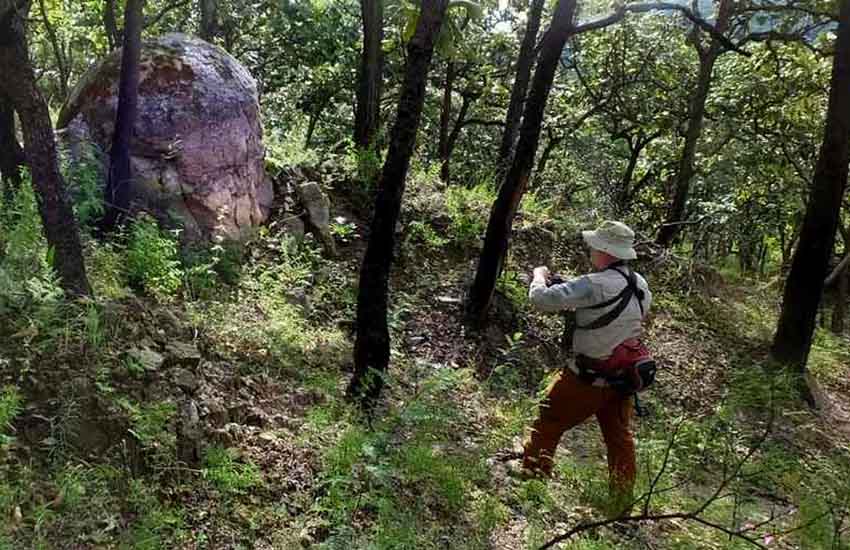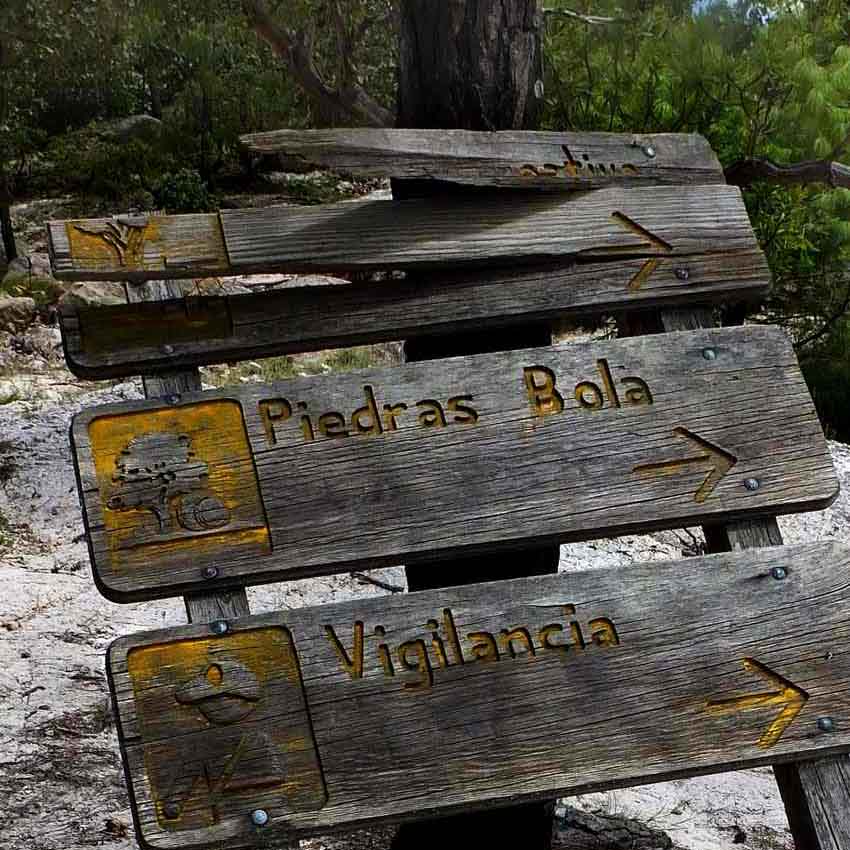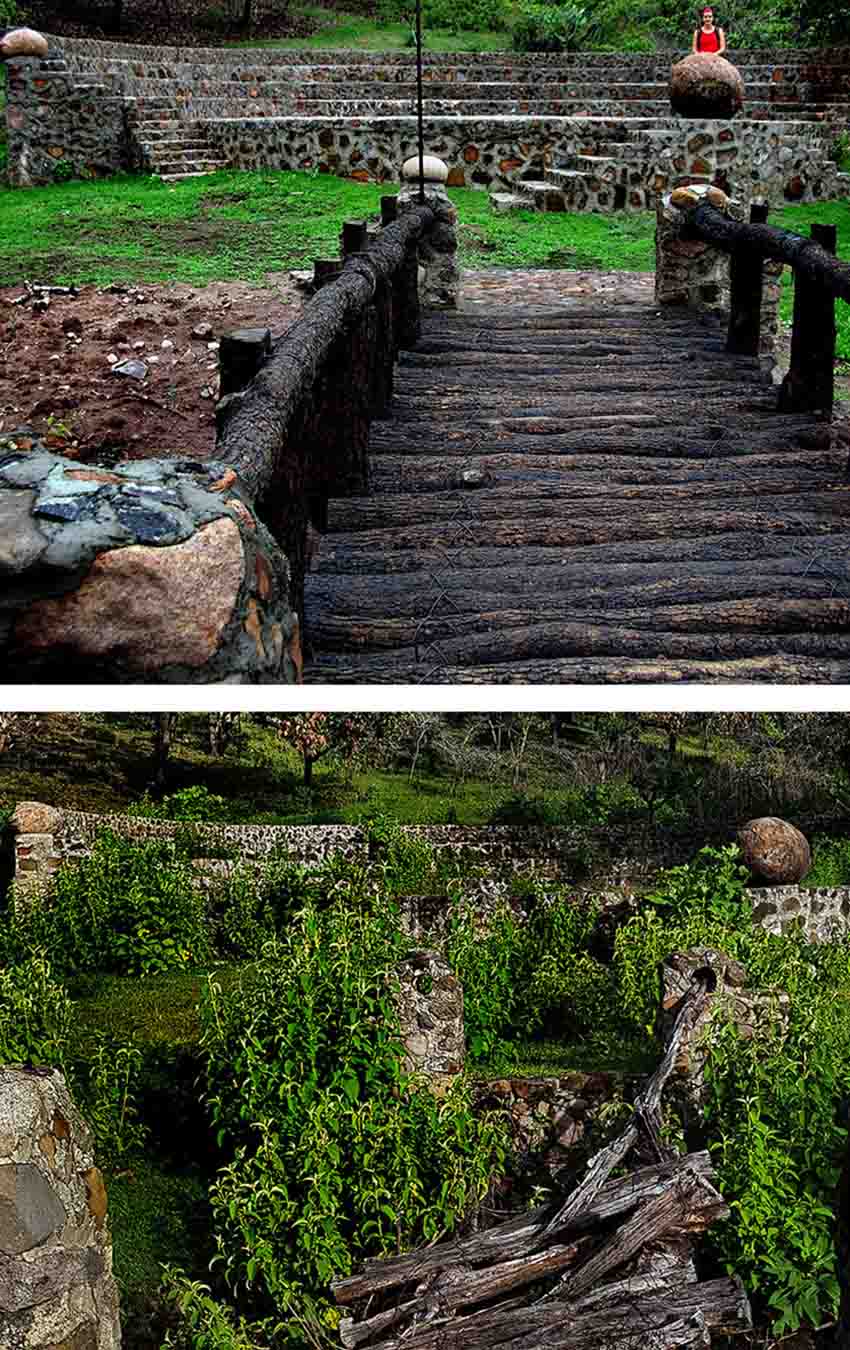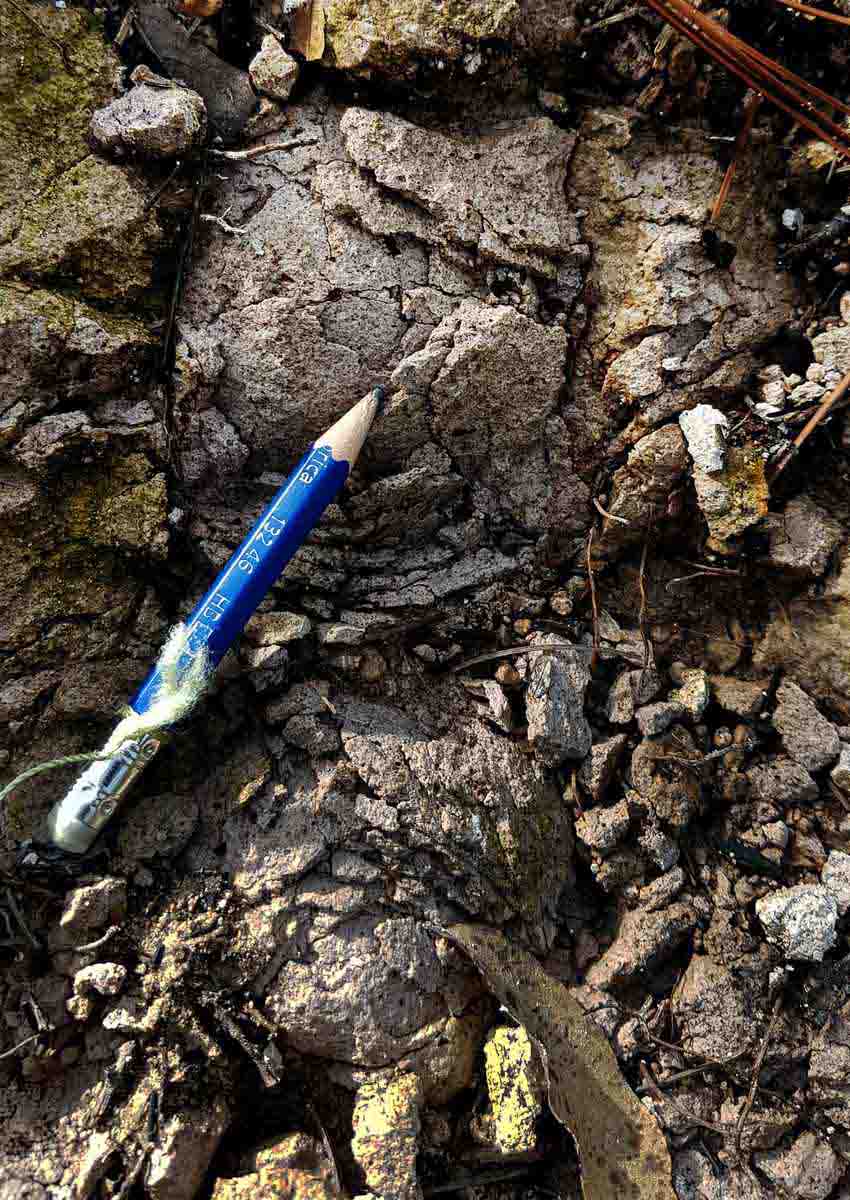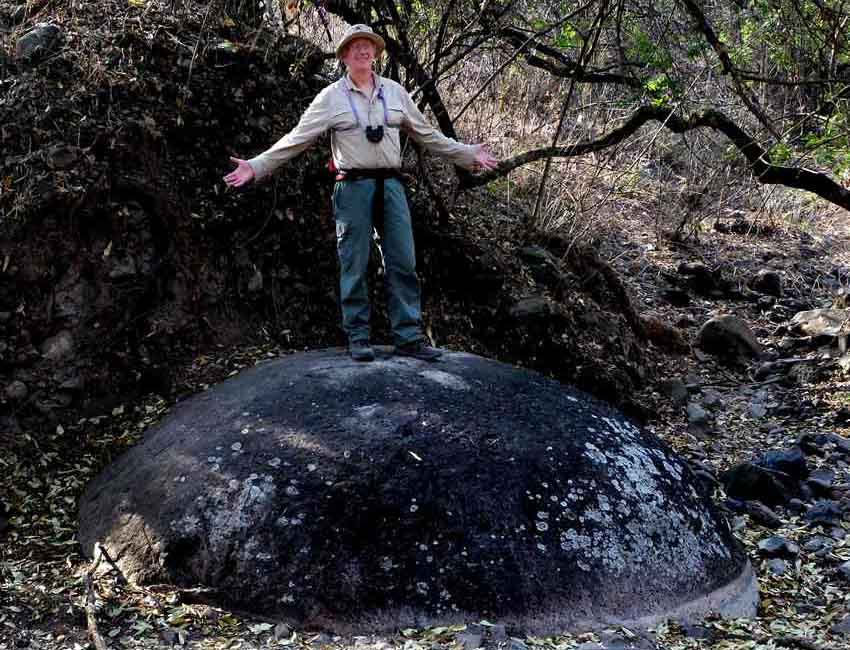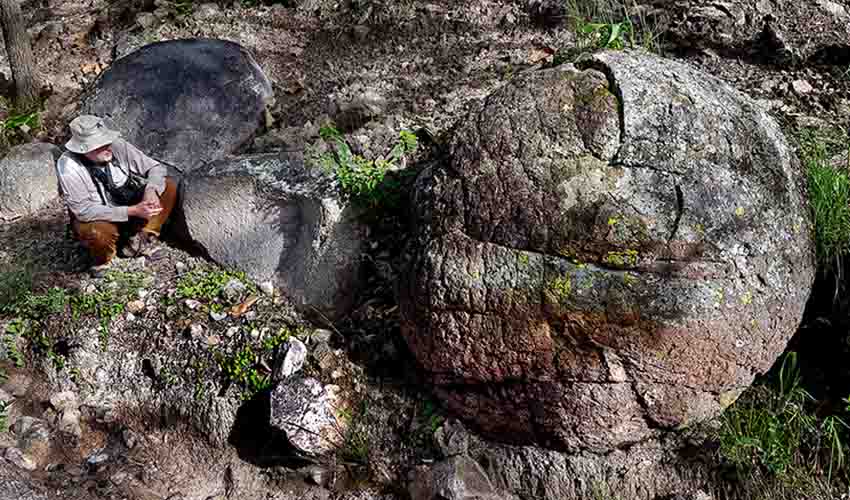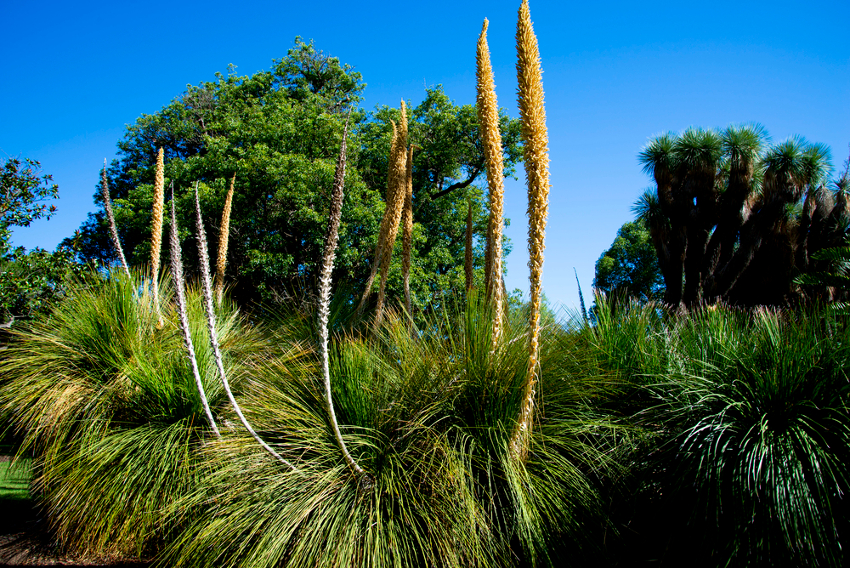In some parts of Mexico, summer is over; the weather has cooled. You’ve taken out your warm clothes, your layers of socks and slippers, sweatshirts and jeans. You’re thinking about cooked comfort food: stews, soups, things from the oven.
That’s not the case where I am, on the Pacific coast, or on the other side of the country, in the Yucatán. We’re still in the throes — deep in the throes! — of summer heat and rains, wondering when, oh when, it will ever end.
It can be challenging to stay out of the kitchen and still feel well-fed without going out to eat. (Sadly, that’s not practical for every meal, at least for me.) I’ve learned the hard way that “throwing things together” usually won’t make a satisfying, filling meal and that taking a little time to plan and prep in the relative cool of the morning will yield rewards later.
As always, use the best-quality ingredients you can: extra-virgin olive oil, juicy ripe fruit, fresh lime or lemon juice.

Spicy Watermelon-Pineapple Salad
- 3 Tbsp. olive oil
- 2 Tbsp. apple cider vinegar
- 1 tsp. fresh lime zest
- 2 Tbsp. lime juice
- 1 Tbsp. honey
- 1 jalapeño, thinly sliced
- Salt and pepper
- ¼ cup finely chopped red onion
- 1¼ lbs. fresh watermelon, chilled
- 1¼ lbs. fresh pineapple, chilled
- 4 oz. feta, crumbled (about 2/3 cup)
- 1 packed cup small cilantro sprigs or 1/3 packed cup torn fresh mint
In a large bowl, stir together oil, vinegar, lime zest and juice, honey and jalapeño. Season with salt and pepper. Add onion; toss to coat. Let marinate 10 minutes.
Chop watermelon and pineapple into 1-inch cubes, discarding any seeds. Add to the vinaigrette; toss to coat. Check seasoning and adjust if necessary.
Refrigerate until serving. When ready to serve, add feta and herbs to salad and toss. Serve immediately.
Avocado Salad with Herbs and Capers
Serve either as a side dish/appetizer with roasted or grilled meats, chicken or fish, or make it part of a light lunch, with crusty bread and tangy cheese.
- 1 large bunch cilantro
- 1 large bunch parsley
- 2 scallions, finely chopped
- 1 jalapeño, seeded, minced
- 1-2 garlic cloves, grated or minced
- ½ tsp. fine sea salt, more to taste
- 2 Tbsp. red wine vinegar, more to taste
- ½ cup extra-virgin olive oil, more for serving
- 4 ripe avocados, peeled, pitted, sliced
- 4 tsp. capers, drained
- Flaky sea salt and black pepper

Reserve a cup of whole cilantro leaves; finely chop remaining leaves and tender stems. Transfer chopped leaves to medium bowl. Do the same with the parsley: Reserve a cup of leaves; finely chop remainder of leaves and tender stems.
Transfer chopped parsley to bowl with cilantro. Add scallions, jalapeño, garlic, fine salt and vinegar. Stir in oil. Taste and add more salt or vinegar if needed.
Scatter the whole cilantro and parsley leaves over 4 salad plates. Fan avocados out on top; sprinkle lightly with fine salt.
Spoon herb dressing over avocado, making sure to include the oil in the bowl; top with capers. Sprinkle with flaky sea salt and black pepper and serve.
Spicy Peanut Noodle Salad with Cucumbers, Red Peppers & Basil
- 8 oz. Asian wheat noodles or ¼ lb. dry uncooked linguini, capellini or fettucine
- ½ cup chunky peanut butter
- 3 Tbsp. soy sauce
- 3 Tbsp. hot chile sauce (such as Sriracha) or to taste
- 2 Tbsp. fresh lime juice or rice wine vinegar
- 1 Tbsp. toasted sesame seed oil
- 1 large clove garlic, minced or grated
- 1 Tbsp. sugar or honey
- 3 Tbsp. warm water
- 2 large red, orange or yellow bell peppers, sliced into thin strips
- 1 cucumber, seeds removed, sliced into small half moons
- 1 cup mung bean sprouts
- 1 cup loosely packed fresh basil, mint or cilantro
- 8 scallions, finely sliced at a severe bias to create long, thin strips
- 2 jalapeños, seeds and ribs removed, sliced into fine strips
- ½ cup roughly crushed roasted peanuts
- Optional: 1-2 red Thai bird chiles or serrano peppers, minced
Cook noodles according to package directions, until tender but still firm. Drain and transfer to bowl of ice water. Agitate noodles until thoroughly chilled; leave in water and set aside.
In large bowl, combine peanut butter, soy sauce, hot sauce, lime juice, sesame oil, garlic, sugar/honey and water. Whisk until combined. Drain noodles thoroughly; add to bowl. Add bell peppers, cucumber, bean sprouts, basil/mint/cilantro, scallions, jalapeños and hot chiles, if using.
Toss well. Serve immediately, topped with roasted peanuts.
Asparagus and Chicken (or Shrimp) Salad with Ginger Dressing
For the dressing:
- 2 Tbsp. minced shallot
- 3 Tbsp. rice wine vinegar
- 2 Tbsp. dark brown sugar or grated piloncillo
- 1 Tbsp. Dijon mustard
- Salt to taste
- Generous pinch of cayenne
- 1 Tbsp. grated fresh ginger
- 2 garlic cloves, minced
- 2 tsp. sesame oil
- ¼ cup vegetable oil

For the salad:
- 1 lb. asparagus
- Salt and pepper
- ½ cup roasted peanuts, crushed
- ¾ lb. cooked chicken or cooked shrimp
- 2-3 limes, halved
- Fresh basil, mint and cilantro leaves, about ½ cup total
- Optional: 1 serrano or jalapeño pepper, thinly sliced
To make the vinaigrette, put shallots, vinegar, sugar, mustard, salt and cayenne in small bowl; let sit 5 minutes. Add ginger and garlic, whisk in sesame and vegetable oils. Taste; adjust seasoning.
Break off tough end of asparagus spears, then cut into 2-inch lengths. Cook in boiling water 1 minute. Drain and cool under running water. Blot dry.
To make salad, put asparagus in a bowl. Season with salt and pepper. Add chile, if using, and crushed peanuts. Dress with half the vinaigrette; toss to coat.
Arrange dressed asparagus on platter or individual plates. Tear chicken into strips; scatter over asparagus. (Alternatively, distribute shrimp over salad.) Drizzle with a little more vinaigrette and a good squeeze of lime. Garnish with basil, mint and cilantro leaves. Serve immediately.
Janet Blaser is the author of the best-selling book, Why We Left: An Anthology of American Women Expats, featured on CNBC and MarketWatch. She has lived in Mexico since 2006. You can find her on Facebook.


